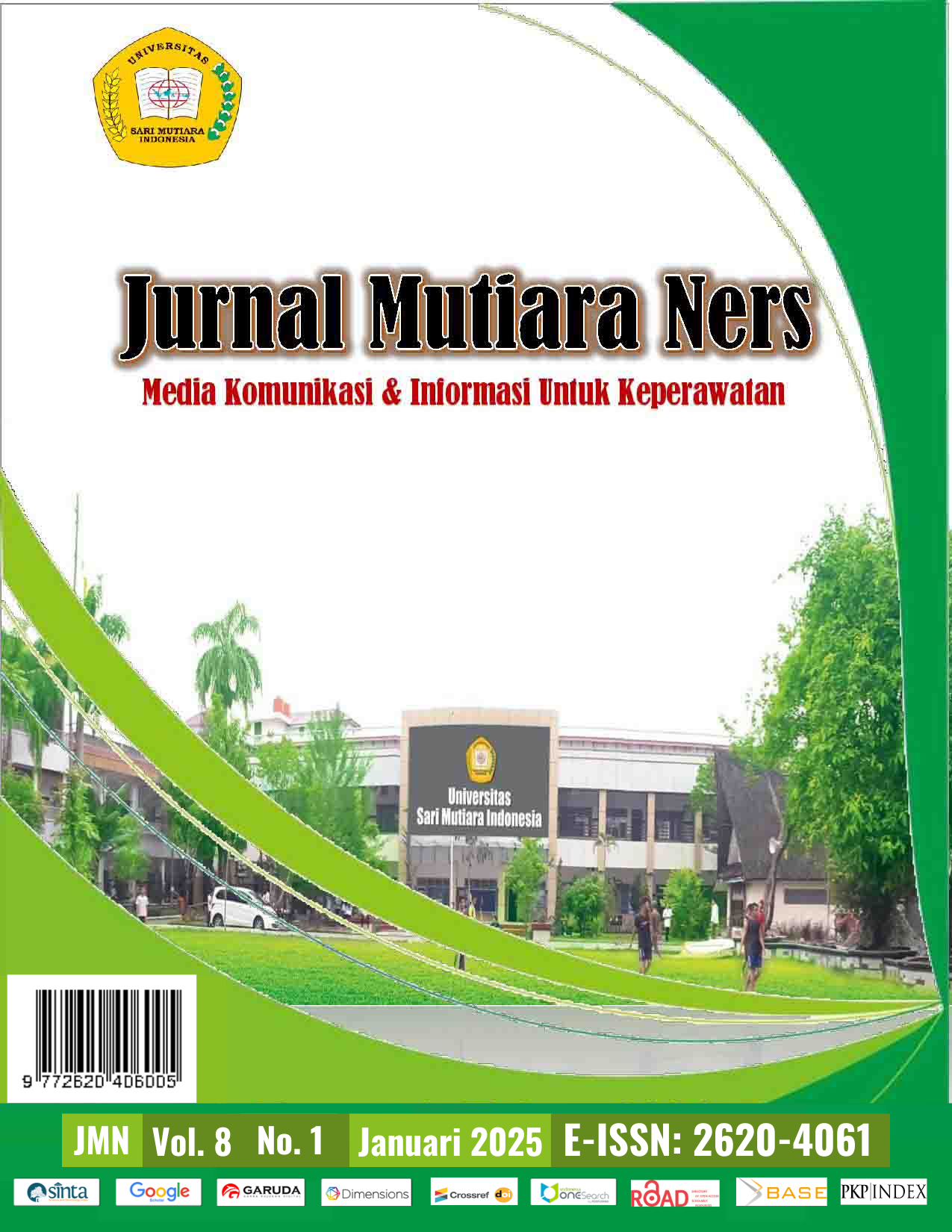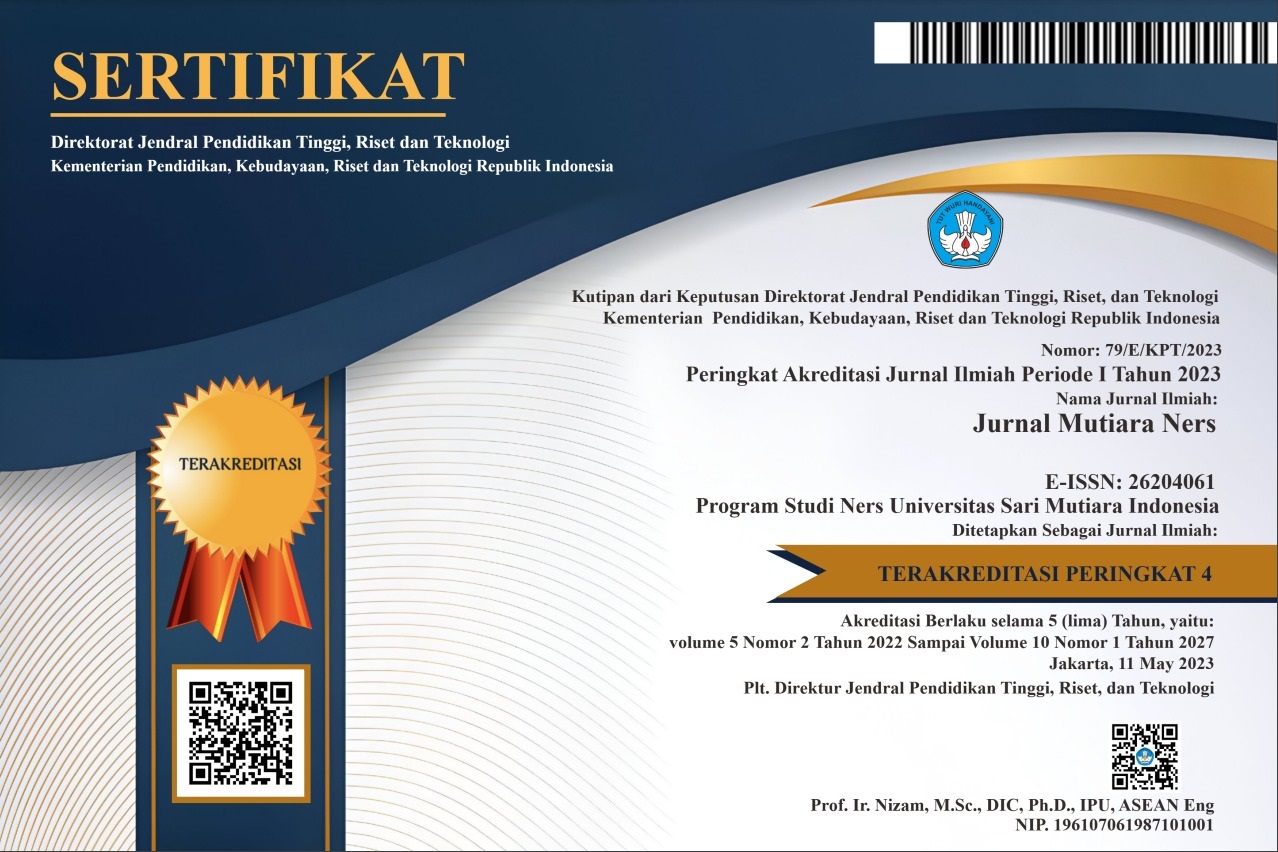FACTORS CONTRIBUTED TOWARD STUNTING IN CHILDREN IN INDONESIA
Keywords:
Breastfeeding, Toddler, Parity, StuntingAbstract
Stunting is a condition of failure to thrive in children under five due to chronic malnutrition, especially in the first 1000 days of Life. Stunting is closely related to the growth and development of the brain and the risk of suffering from chronic diseases in adulthood. Multi-factors that caused stunting include nutrition intake, toddler health status, maternal characteristics, parity, breastfeeding history, and the environment sanitation. This study aimed to identify the factors associated with the incidences of stunting in children under five years. This study was a quantitative study with a cross-sectional approach. This study was conducted from April to October 2019. This study involved 220 toddlers aged 1-5 years with their mothers. Study revealed that number of children were statistically correlated with to the incidence of stunting (p-value 0.005). There were three factors associated with the incidence of stunting in children under five years of age These factors are parity, history of exclusive breastfeeding, and mother's knowledge. The parity factor or the number of children is the most related factor with the incidence of stunting in children (p-value 0.007). Mothers of toddlers must be motivated to provide adequate nutrition in accordance with the needs at the age of growth and development. Government programs to overcome stunting need to start from family planning and the quality of performance of nutrition programs, one of which is intensive nutrition education for pregnant women and mothers of toddlers.
Downloads
References
Ezeh OK, Abir T, Zainol NR, Mamun A al, Milton AH, Haque MR, et al. Trends of stunting prevalence and its associated factors among Nigerian children aged 0–59 months residing in the Northern Nigeria, 2008–2018. Nutrients. 2021 Dec 1;13(12).
Ponum M, Khan S, Hasan O, Mahmood MT, Abbas A, Iftikhar M, et al. Stunting diagnostic, and awareness: Impact assessment study of sociodemographic factors of stunting among school-going children of Pakistan. BMC Pediatrics. 2020 May 19;20(1).
Nwosu CO, Ataguba JEO. Explaining changes in wealth inequalities in child health: The case of stunting and wasting in Nigeria. PLoS ONE. 2020 Sep 1;15(9 September).
Titaley CR, Ariawan I, Hapsari D, Muasyaroh A, Dibley MJ. Determinants of the stunting of children under two years old in Indonesia: A multilevel analysis of the 2013 Indonesia basic health survey. Nutrients. 2019 May 1;11(5).
Suminar JR, Arifin HS, Fuady I, Aisha S, Syifa A, Prasanti D. Application of planned behavior model: Factors affecting young mothers’ intention of behavior in stunting prevention in West Java. Review of International Geographical Education (RIGEO) [Internet]. 2021 Mar 25;11(5):100–9. Available from: www.rigeo.org
Tafesse T, Yoseph A, Mayiso K, Gari T. Factors associated with stunting among children aged 6–59 months in Bensa District, Sidama Region, South Ethiopia: Unmatched case-control study. BMC Pediatrics. 2021 Dec 1;21(1).
Rachmi CN, Agho KE, Li M, Baur LA. Stunting, underweight and overweight in children aged 2.0-4.9 years in Indonesia: Prevalence trends and associated risk factors. PLoS ONE. 2016 May 1;11(5).
Nurbiah, Rosidi A, Margawati A. The potency of socio-economic family and cultural factor in affecting stunting of Muna ethnic in Batalaiworu, Southeast Sulawesi. In: IOP Conference Series: Earth and Environmental Science. Institute of Physics Publishing; 2019.
Casale D, Desmond C, Richter L. The association between stunting and psychosocial development among preschool children: A study using the South African birth to twenty cohort data. Child: Care, Health, and Development. 2014;40(6):900–10.
Keino S, Plasqui G, Ettyang G, Borne B Van Den. Determinants of stunting and overweight among young children and adolescents in sub-Saharan Africa. Food and Nutrition Bulletin. 2014;35(2):167–78.
Kartika Yunita D, Budiati T. Effects of the duration of breastfeeding and partner support for breast-feeding mothers on the nutritional status of infants aged 0-6 months. Journal of Public Health Research. 2021 May 1;10(s1):2400.
Paramashanti BA, Hadi H, Gunawan IMA. Pemberian ASI eksklusif tidak berhubungan dengan stunting pada anak usia 6 – 23 bulan di Indonesia. Jurnal Gizi dan Dietetik Indonesia. 2015;3(3):162–74.
Khasanah DP, Hadi H, Paramashanti BA. Waktu pemberian makanan pendamping ASI (MP-ASI) berhubungan dengan kejadian stunting anak usia 6-23 bulan di Kecamatan Sedayu. Jurnal Gizi dan Dietetik Indonesia. 2016;4(2):105–11.
Setiawan E, Machmud R, Masrul. Faktor-Faktor yang berhubungan dengan kejadian stunting pada anak usia 24-59 bulan di wilayah kerja Puskesmas Andalas Kecamatan Padang Timur Kota Padang tahun 2018. Jurnal Kesehatan Andalas. 2018;7(2):275–84.
Ziliwu NSP, Anggraeni LD, Lina RN. Factors associated with nutritional status of children under five years of age in Gunungsitoli Idanoi primary healthcare center. The Indonesian Journal of Public Health. 2020 Dec 1;15(3):315–24.
Webb CM, Morales ML, Lopezid M, Baca-Turpo B, Arque E, White AC, et al. Stunting in pre-school and school-age children in the peruvian highlands and its association with fasciola infection and demographic factors. PLoS Neglected Tropical Diseases. 2021 Jun 1;15(6).
Anmaru YYR, Laksono B. The influencing factor analysis of stunting incidence in children aged 24-59 months at Kedung Jati Village. Public Health Perspective Journal. 2019;4(2):116–21.
Illahi KR, Muniroh L. Gambaran sosio budaya gizi etnik madura dan kejadian stunting balita usia 24-59 bulan di Bangkalan. Media Gizi Indonesia. 2015;11(2):135–43.
Mugianti S, Anam AK, Najah ZL. Faktor penyebab anak stunting usia 25-60 bulan di Kecamatan Sukorejo, Kota Blitar. Jurnal Ners dan Kebidanan. 2018;5:268–78.
Pollard AJ, Bijker EM. A guide to vaccinology: From basic principles to new developments. Nature Reviews Immunology. 2021 Feb 1;21(2):83–100.
Wemakor A, Garti H, Azongo T, Garti H, Atosona A. Young maternal age is a risk factor for child undernutrition in Tamale Metropolis, Ghana. BMC Research Notes. 2018 Dec 10;11(1).
Nasikhah R, Margawati A. Faktor resiko kejadian stunting pada balita usia 24-36 bulan di Kecamatan Semarang Timur. Journal of Nutrition College. 2012;1(1):176–84.
Aridiyah FO, Rohmawati N, Ririanty M. Faktor-faktor yang mempengaruhi kejadian stunting pada anak balita di wilayah pedesaan dan perkotaan. Jurnal Pustaka Kesehatan. 2015;3(1):164–70.
Linu NN, Punuh MI, Kapantow NH. Hubungan antara pola asuh dengan status gizi anak usia 24-59 bulan di Kecamatan Tombatu, Kabupaten Minahasa Tenggara. Jurnal Kesehatan Masyarakat. 2018;7(4).
Mentari S, Hermansyah A. Faktor-faktor yang berhubungan dengan status stunting anak usia 24-59 bulan di wilayah kerja UPK Puskesmas Siantan Hulu. Pontianak Nutrition Journal (PNJ). 2018;1(1):1–5.
Pei CS, Appannah G, Sulaiman N. Household food insecurity, diet quality, and weight status among indigenous women (Mah meri) in peninsular Malaysia. Nutrition Research and Practice. 2018 Apr 1;12(2):135–42.
Taufiqoh S, Suryantoro P, Kurniawati HF. Maternal parity and exclusive breastfeeding history are significantly associated with stunting in children aged 12-59 months. Majalah Obstetri & Ginekologi. 2018;25(2):66.
Published
How to Cite
Issue
Section
Copyright (c) 2025 Lina Dewi Anggraeni, Tuti Asrianti Utami, Hany Wihardja

This work is licensed under a Creative Commons Attribution-ShareAlike 4.0 International License.


.png)





